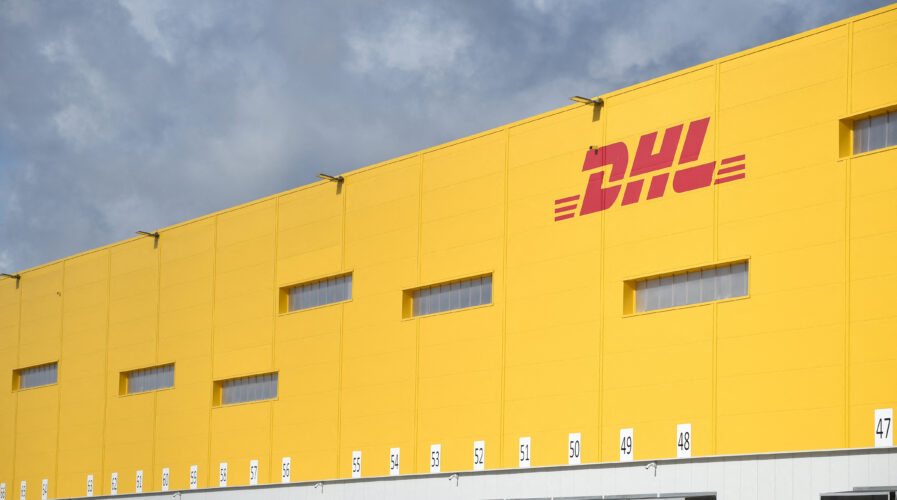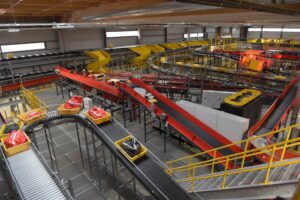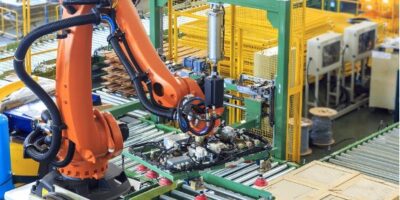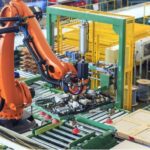
DHL: How the pandemic accelerated logistics automation. (Photo by Eric PIERMONT / AFP)
DHL: How the pandemic accelerated logistics automation
- The pandemic, according to DHL Supply Chain, has steered the logistics industry more towards automation with an increasing amount of processes along the supply chain being automated to meet surging demands.
- DHL also shared details on its first-ever ultra-modern logistics commercial complex in Bayan Lepas that will be established next year.
- DHL noticed Asia is catching up with Europe when it comes to automation as companies are beginning to realize the importance of it in warehouse processes.
Automation in logistics have always been a perfect duo. After all, when it comes to implementing automation, an industry that heavily relies on repetitive tasks is the most perfect fit for machines. Although the idea of automation in logistics isn’t something new, the pandemic has highlighted the urgency of its adoption as warehouses were scrambling to keep up with rising demands while simultaneously dealing with labor shortages, supply chain, and transportation issues.
For German-based logistics company DHL, a pioneer in robotics and automation, the pandemic dramatically changed its course with its digital transformation. For context, DHL’s current digital transformation began in 2019 with the release of its “Strategy 2025”, a five-year plan that outlined how the company planned to modernize its IT systems, integrate new technologies and upskill its workforce for the digital age.
However, the emergence of Covid-19 have most certainly fast tracked DHL’s adoption to automation and even robotics, especially in Asia. Tech Wire Asia, in conversation with DHL Supply Chain’s general manager for solution design Rohit Nair recently, discussed the prospects of automation within the logistics industry.
For context, logistics has long been known as a traditional industry associated with manual labor and repetitive tasks. Often held back by legacy processes and dated IT systems, logistics companies including DHL, are increasingly aware of the need to harness technology to stay competitive in a fast-moving industry.
What are your thoughts on automation adoptions, both globally and regionally?
Automation in Europe and Oceania has always been an important factor because businesses know at the end of the day, everything boils down to return of investment (ROI). In those places, cost of labor was higher as opposed to say, Asia Pacific where labor is still reasonable and ROIs for automation will be longer in comparison.
However, things have changed over the past two years — the Covid-19 has been kind of a ‘booster’ in terms of automation in Asian countries and specifically some other geographical locations. Take Malaysia for instance, this country is predominantly focused on foreign migrant workers apart from local workers and when the pandemic hit, most of the foreign ones had to go back. That then translated into shortage of labor and that is automation started booming.
To top it off, with higher demand in automation, costs are reducing because of competition, which in turn benefits end users like logistic players. Moreover, with automation comes reliability. For example, in any industry you work in, human beings cannot be productive 100% throughout the shift, although operations are almost ongoing constantly. With automation, productivity is not an issue; machines will keep on running even for labor-intensive activities.
You don’t need an army of people to manage these automations, so in that way, you are utilizing all the hours of the day without paying for people to work in various shifts. Noticing all this, a bigger shift towards automation has started.
How has the adoption of automation been for DHL in this region?
As visionaries, we had started doing automation long back before the pandemic. We started by replicating the European countries and even the US for the Asian market. Yet, from the customer ‘s perspective, issues like labor shortage or even space constraints due to surging demand were not expected to come that soon. So we saw the need to pioneer and educate the market by showing that direction towards a sustainable growth is automation. In that sense, the pandemic was a reality check for everyone.

A picture shows a distribution centre at the new International logistics DHL Express air hub at the Roissy-Charles de Gaulle airport, outside Paris, on October 5, 2021. (Photo by Eric PIERMONT / AFP)
For DHL, we have the edge in adopting automation since it has been our company practice globally. So, we have a good vendor base that supports us, giving us better pricing for a global scale, but that won’t necessarily be the same for say, a startup company. In Penang, we are setting up a facility which is going to be approximately 11,000 square meters, 35 meters high, fully equipped with automated storage and retrieval systems (ASRS) and automated guided vehicles (AGVs) robotics technology. It will be the first in this island and for DHL Supply Chain Asia Pacific. The facility will also have a goods-to-person robot, which is for small parts.
Automation is definitely not just limited to your warehouses. So how automated is the entire ecosystem of DHL?
DHL has a goal to achieve in 2050 which mainly centers around achieving zero carbon emission — so that’s where the whole drive is focusing towards. Therefore automation comes in various processes in our ecosystem, from our warehouses, to our transportations and even our delivery process.
We have been continuously expanding the use of e-mobility and green delivery solutions in our operations, while also driving the innovation of environmentally friendly technologies and fuels, such as biofuels for aviation. Together with partners, we are engaged in the research and development of logistics solutions that are environmentally friendly and conserve resources. And when the market can’t come up with the solutions, we’re taking the initiative ourselves–as was the case with our teardrop trailers.
While 2050 is a long way off, we have set four major milestones for 2025 to gauge our progress globally, locally, economically and socially. Firstly, by 2025, Deutsche Post DHL Group wants to operate 70% of its own first and last mile services with clean pick-up and delivery solutions, such as bicycles and electric vehicles. By then, we also want to increase our carbon efficiency by 50% over 2007 levels. Even with our sales, by 2025, we want more than 50% of it to incorporate Green Solutions.
When it comes to automation and robotics, what trends could possibly take place in the future?
So one trend is the progress in mobility with all these Automated Guided Vehicles (AGVs) or Autonomous Mobile Robots (AMRs) — those are taking place right now. Secondly is something everyone is talking about which is blockchain adoption in logistics and warehouse but that will be between the horizon of five to 10 years. Then there is the internet of things (IoT) which I reckon will pick up intensively within the next two to three years.
There are also electric and unmanned vehicles which from a logistic point of view, will definitely happen. I will say that it still needs some time to mature, between five to 10 years, before it turns into a reality.
READ MORE
- Strategies for Democratizing GenAI
- The criticality of endpoint management in cybersecurity and operations
- Ethical AI: The renewed importance of safeguarding data and customer privacy in Generative AI applications
- How Japan balances AI-driven opportunities with cybersecurity needs
- Deploying SASE: Benchmarking your approach


